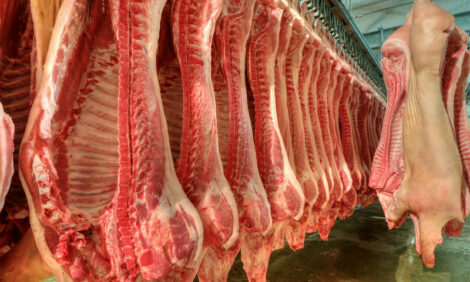



Market Preview: What's driving the hog price roller coaster?
US - Weekly U.S. Market Preview for 16th June, provided by Steve R. Meyer, Ph.D., Paragon Economics, Inc.One of Will Rogers' most famous quotes concerned the weather in Oklahoma: "If you don't like the weather just wait a minute, it will change."
It appears that the same can be said for the hog market this year. The path of hog prices thus far in 2006 has likely left a few roller coasters envious.
Figure 1 shows the pattern: Up $8 from mid-January to mid-February, down $8 from mid-February to early April, and now up nearly $15 through last week -- and more if you look at this week's daily prices. The weekly average could reach nearly $74.

Yes, you might say, "But that is the negotiated price and it is far more volatile than the total average." Agreed -- but not by much. Figure 2 shows the same weekly data for the total weighted average net price that includes all contracted hogs. Since the major portion of the non-negotiated hogs are priced by a hog or pork market formula, this chart exhibits almost as much variability as does the national average negotiated chart.

No matter how you cut it, this has been a wild ride. So what is driving this thing?
First, it appears that hog supplies have grown quite tight, quite quickly. Federally inspected (FI) slaughter levels remained very near expected levels through last week, but FI barrow and gilt weights dropped 2 lb., from 199 to 197 lb., the week of May 27. Data released on Thursday indicated that weights were steady for the week that ended June 2, but look for more reductions as packers have apparently chased pigs hard enough to get lighter hogs shipped.
There is a limit to that behavior, however. Producers will only go so far until they are leaving potential profits on the table. That's when prices will rise at the same time we see slaughter rate fall -- as has happened this week. FI hog slaughter through Thursday was about 3% lower than last year and the cash market has been robust to say the least.
Is this the long-discussed and anticipated PMWS/PCVAD supply hole? It's very possible. Neither I, nor several other veteran market analysts I've talked to, have ever been able to directly track an animal health situation to the slaughter data, but this could be a first. Not only are U.S. numbers down, but we have seen the lowest levels of Canadian market hog imports since late 2003. This is quite likely a function of large death losses in eastern Canada that drove pig crops down significantly last fall and winter.
Second, it looks like slumbering meat demand may be awakening as well. The choice beef cutout value has rallied over $15 since early April and boneless/skinless chicken breasts have risen by 30 cents to the $1.25/lb. area. That increase has also driven USDA's 12-city composite broiler price up about 6.5 cents/lb. -- about 11% just since the end of April.
Part of the increase in chicken prices is attributable to some modest cutbacks in output, but last week's FI beef production was still nearly 8% larger than last year, and there has been no good news on the beef export front.
What to do?
This cash market has carried Chicago Mercantile Exchange (CME) Lean Hogs futures contracts to contract life highs across the board. Summer futures are firmly above $70, October is above $60, and December is at a level that means profits for most producers. This is another good opportunity to price late 2006 production.
The charts show little sign of topping at present, but you should review your financial situation and carefully consider what these prices mean. I'm still expecting pig supplies to be larger this fall, death losses notwithstanding, and large enough to take prices into the red for average producers, especially if corn prices rise.
It is very early to be pricing February and April sales, but those contracts are nearing the highs of February and April contracts in many recent years, so think about pricing a few pigs there as well. Unless this supply situation gets very tight, we are very near the summer highs and, when cash prices fall, it will probably mean the end of the bull market in Lean Hogs futures as well.








